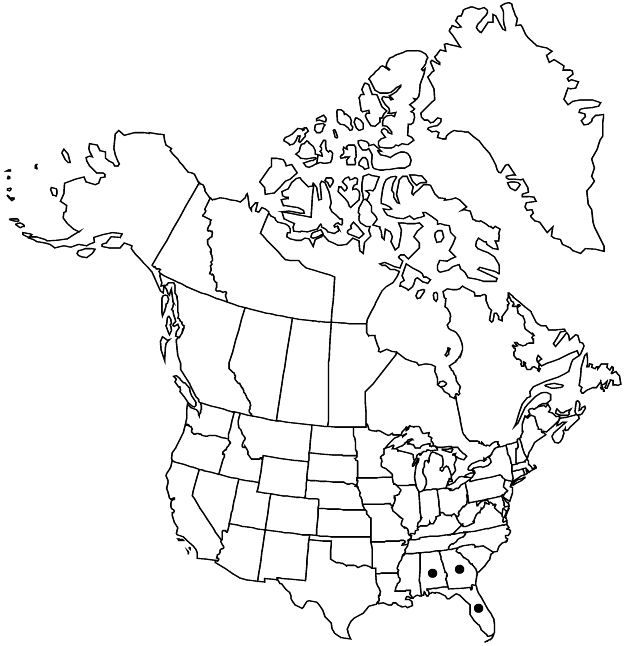Euphorbia floridana
Fl. South. U.S., 401. 1860.
Herbs, perennial, with slender to moderately thickened rootstock. Stems erect, 20–65 cm. Leaves: petiole absent; blade linear to linear-elliptic or linear-lanceolate, 30–105 × 2–4(–7) mm, chartaceous, base attenuate, rounded, or nearly truncate, apex acute; only midvein evident. Cyathial arrangement: terminal pleiochasial branches 3–5, 3–16 cm, 3–5(–7) times 2-branched; pleiochasial bracts linear-lanceolate or narrowly ovate, 19–55 × 4–12 mm, margins entire, apex acute or acuminate; dichasial bracts usually ovate, lanceolate, or oblong, rarely deltate, 8–21 × 4–14 mm, margins entire, apex acute, acuminate, or rounded with mucronate tip; axillary cymose branches 1–3(–6). Cyathia: peduncle (except for that of 1st cyathium at base of pleiochasia) 2–5 mm (not exceeding dichasial bracts). Involucre campanulate or obconic, 1.6–3.3 × 1.8–3.1 mm, lobes ovate, 0.5–0.7 mm, ciliate, exceeded by glands; glands yellow-green, oblong to trapezoidal, 0.5–0.8 × 0.8–1.2 mm, distal margins deeply erose. Staminate flowers 20. Pistillate flowers: gynophore exserted 2.9–5.3 mm, calyxlike lobes triangular, 0.3–0.7 mm; styles connate 1/3–1/4 length, 1.1–1.7 mm. Capsules oblate-ovoid, 4.6–5.5 × 8.9–9 mm, strongly 3-lobed; columella 3.4–4.2 mm. Seeds brown to blackish, depressed-globose, circular in cross section, 2.8–3 × 3.2–3.6 mm, smooth, base flattened, with punctiform depressions, apex flattened.
Phenology: Flowering and fruiting spring–fall.
Habitat: Xeric pine-oak sandhills, pine scrub, sandy soils.
Elevation: 20–80 m.
Distribution

Ala., Fla., Ga.
Discussion
Selected References
None.